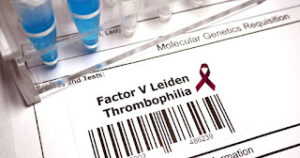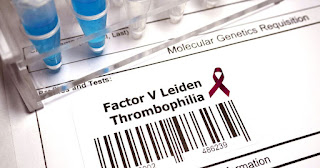Understanding Factor V Leiden: Awareness and Education
Factor V Leiden is a genetic mutation that significantly increases the risk of developing abnormal blood clots in veins, a condition known as thrombophilia. This disorder can lead to serious health complications if not diagnosed and managed properly. Raising awareness about Factor V Leiden is crucial to ensure early diagnosis, effective treatment, and prevention of potentially life-threatening events.
 Factor V Leiden Awareness Month Factor V Leiden Awareness Month |
What is Factor V Leiden?
Factor V Leiden is a specific mutation of one of the clotting factors in the blood, known as factor V. This mutation makes the factor V protein resistant to inactivation by activated protein C, a natural anticoagulant. As a result, individuals with this mutation are more prone to form clots, particularly in the veins. These clots can cause conditions such as deep vein thrombosis (DVT) and pulmonary embolism (PE), which can have severe health consequences.
What Month is Factor V Leiden Awareness?
Factor V Leiden Awareness Month is observed in July. This month is dedicated to increasing public understanding of this genetic disorder, promoting research, and advocating for improved diagnostic and treatment options. The goal is to educate individuals about the risks, symptoms, and management strategies associated with Factor V Leiden, ultimately reducing the incidence and impact of thrombotic events.
What is the Color for Factor V Leiden Awareness Month?
The designated color for Factor V Leiden Awareness Month is burgundy. On July 29, individuals and organizations wear burgundy to show their support and spread awareness about this condition. The use of this color helps to unify awareness efforts and create a recognizable symbol for the cause.
Show your support for Factor V Leiden Awareness Month with this burgundy t-shirt. Featuring a bold design, it raises awareness and promotes education about this genetic disorder.
 |
| Factor V Leiden Awareness Month |
What are the Symptoms of Factor V Leiden?
Many people with Factor V Leiden never experience symptoms and may remain unaware of their condition. However, those who do develop symptoms typically experience issues related to blood clots. Common symptoms include:
- Swelling, pain, or tenderness in the leg, often associated with DVT.
- Red or discolored skin on the affected leg.
- Warmth in the affected area.
- Shortness of breath, chest pain, or coughing up blood, which are symptoms of a pulmonary embolism.
- Unusual or prolonged bleeding.
Because these symptoms can indicate serious conditions, it’s crucial to seek medical attention promptly if they occur.
What are the Diagnostic Criteria for Factor V Leiden?
Diagnosing Factor V Leiden typically involves a combination of medical history, physical examination, and specific blood tests. The key diagnostic steps include:
- Medical History and Physical Exam: A healthcare provider will assess the patient’s personal and family history of blood clots and look for any symptoms or risk factors.
- Blood Tests: Two main blood tests are used to diagnose Factor V Leiden:
- Activated Protein C Resistance Test (APC Resistance Test): This test measures the blood’s response to activated protein C. People with Factor V Leiden will show resistance to this protein.
- Genetic Test: If the APC resistance test is positive, a genetic test may be performed to confirm the presence of the Factor V Leiden mutation. This test looks for the specific DNA mutation in the F5 gene.
Early diagnosis through these tests can help manage the risk of thrombosis and guide treatment decisions.
Conclusion
Factor V Leiden Awareness Month in July, symbolized by the color burgundy, plays a vital role in educating the public about this genetic disorder. By understanding the symptoms, risks, and diagnostic criteria, individuals can seek timely medical advice and appropriate interventions. Awareness efforts aim to improve the quality of life for those affected by Factor V Leiden and reduce the incidence of dangerous blood clots through education and advocacy.
